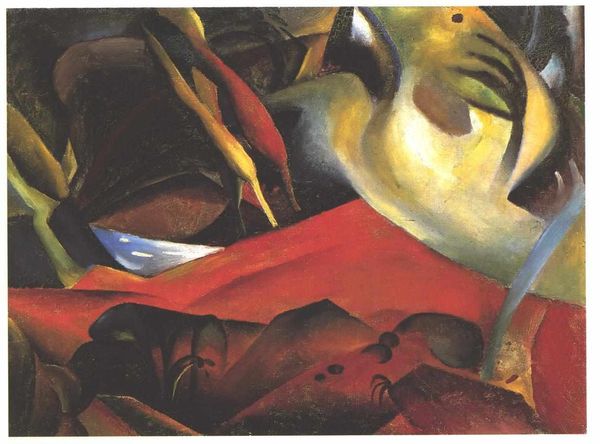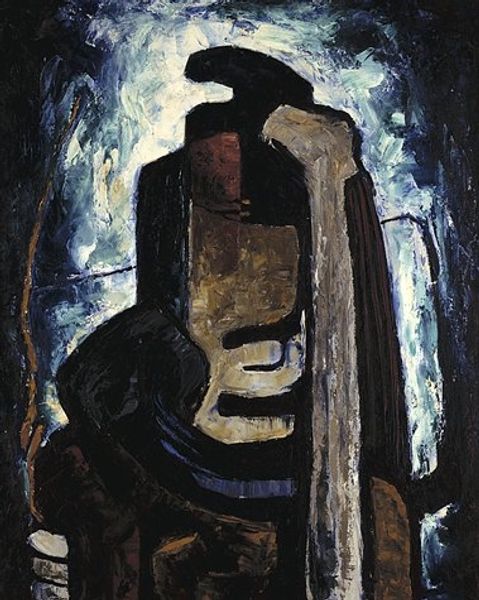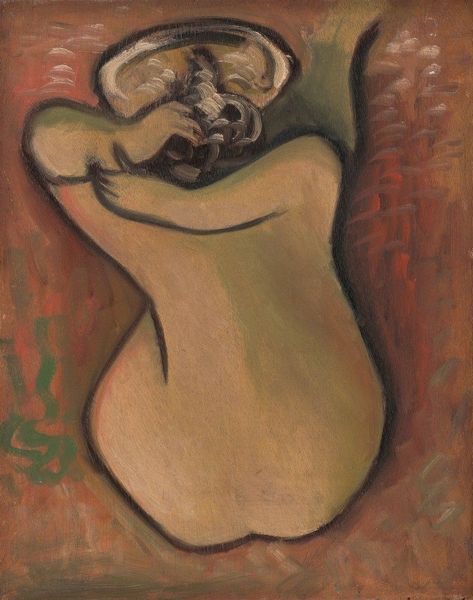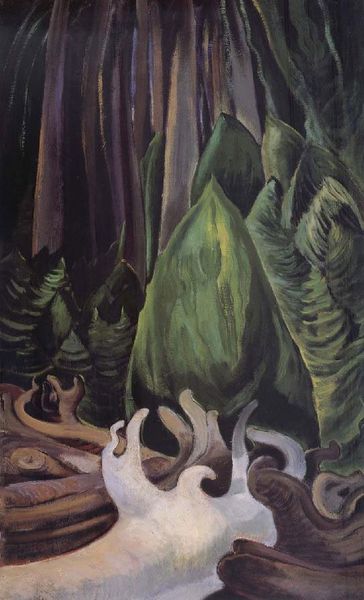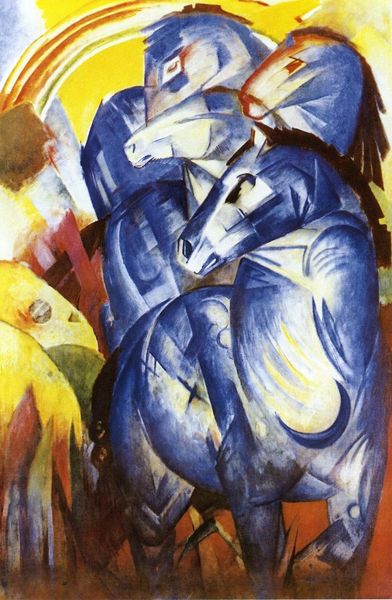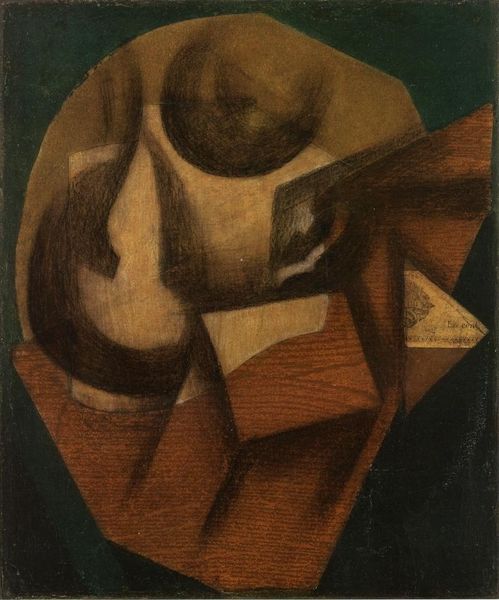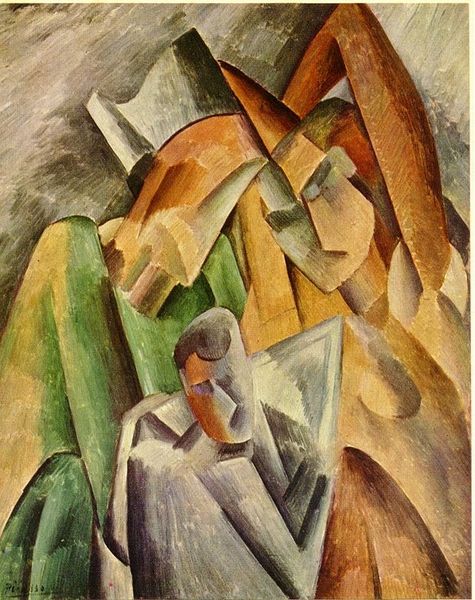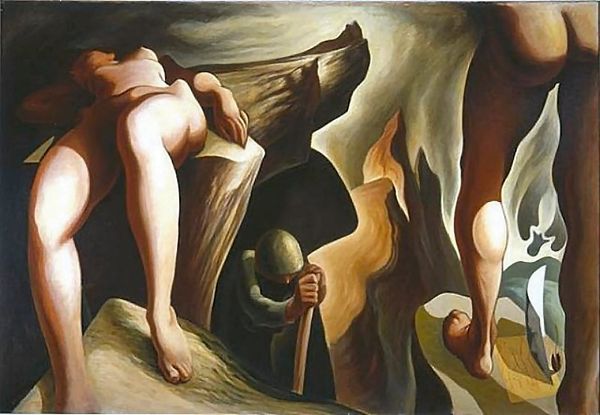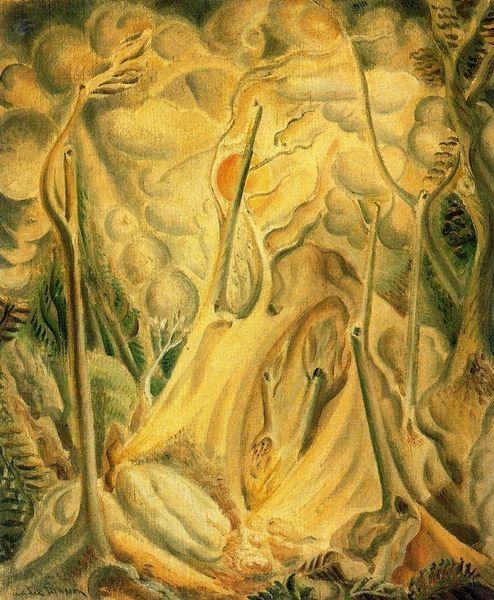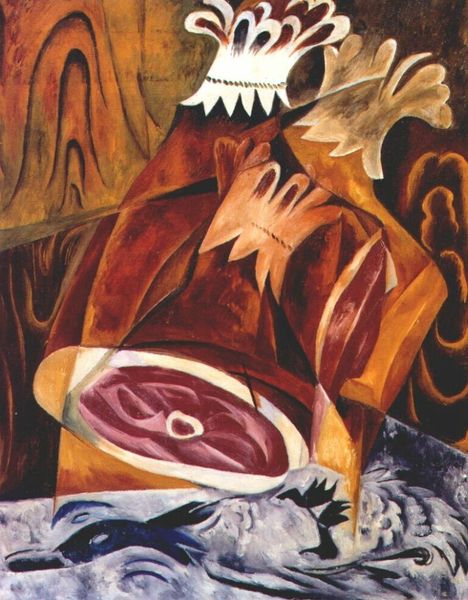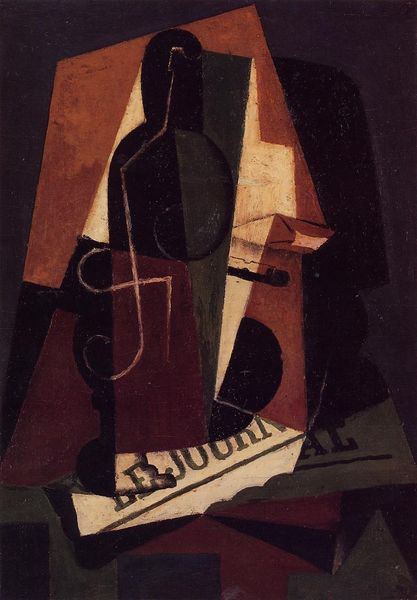
Copyright: Public domain
Editor: This is Emily Carr's "A Young Tree," painted in 1931 using oil. It's quite imposing; the way the light seems to emanate from within the tree itself gives it an almost spiritual feeling. How do you interpret this work? Curator: For me, this painting is a powerful statement about the interconnectedness of identity, nature, and spirituality, especially considering Carr’s position as a woman artist navigating a male-dominated art world. Consider the way Carr employs Expressionistic brushstrokes – swirling, dynamic, almost violent. Doesn’t that evoke the struggle for recognition and voice, not only for herself but also for the Indigenous communities whose land inspired much of her work? Editor: I hadn't considered that direct link between the brushstrokes and struggle. So you're saying that the very *style* becomes a commentary? Curator: Exactly! Look at the light, which you noted, almost holy – think about the cultural context. Carr was deeply influenced by First Nations spirituality, viewing the forest not as a resource to be exploited, but as a sacred space. Isn't it possible to see this tree as a symbol of resilience, a figure that endures despite the clear-cutting that ravaged so much of British Columbia's landscape at that time? The darkness pressing in on the sides feels threatening, doesn't it? Editor: It does. So it's less a celebration of nature and more a defiant stand? Curator: I think it’s both. Carr’s "Young Tree" acknowledges the devastation while simultaneously celebrating the enduring power and sacredness of nature. And it's also about the importance of recognizing the intertwined histories and struggles of both the land and its original inhabitants. Editor: I'm struck by how much richer my understanding of the painting is now, seeing it as an intersection of personal struggle, Indigenous spirituality, and environmental activism, all expressed through the very act of painting. Curator: Absolutely! It’s a reminder that art is never created in a vacuum; it always reflects, and can challenge, the world around it.
Comments
No comments
Be the first to comment and join the conversation on the ultimate creative platform.
